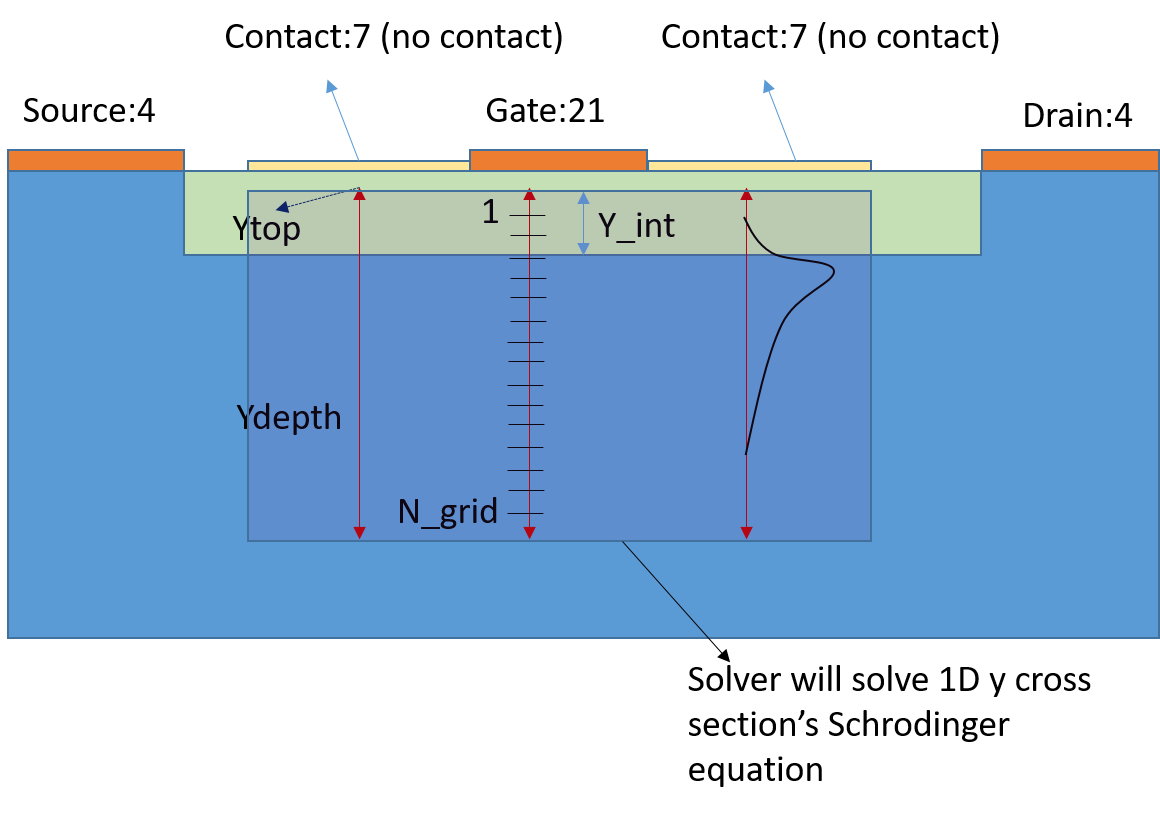"$outputwave" 修訂間的差異
(已建立頁面,內容為 "2D-DDCC solves the Poisson Drift-diffusion self-consistently. If we want to solve Schrodiner equations and get the eigen values, it would be very time consuming. The...") |
|||
| 行 7: | 行 7: | ||
define Y_top and Y_depth as we used in 1D-DDCC Schrodinger solver to solve this problem. We also need to set N_grid to decide the dy in the FD Schrodinger solver solver. Y_int is for solver to know where is oxide insulator and semiconductor interface. However, this input is no longer used. Therefore, the user can put any value, which will not affect the output. <br> |
define Y_top and Y_depth as we used in 1D-DDCC Schrodinger solver to solve this problem. We also need to set N_grid to decide the dy in the FD Schrodinger solver solver. Y_int is for solver to know where is oxide insulator and semiconductor interface. However, this input is no longer used. Therefore, the user can put any value, which will not affect the output. <br> |
||
| − | Note that this command is similar to [[$useschrodn]]. The difference is that [[$useschrodn]] will solve Poisson+1D Schrondiger (all sections) self-consistently. [[$outputwave]] will only output wave function at the end of each bias. |
+ | <br> Note that this command is similar to [[$useschrodn]]. The difference is that [[$useschrodn]] will solve Poisson+1D Schrondiger (all sections) self-consistently. [[$outputwave]] will only output wave function at the end of each bias. |
於 2017年9月3日 (日) 20:18 的修訂
2D-DDCC solves the Poisson Drift-diffusion self-consistently. If we want to solve Schrodiner equations and get the eigen values, it would be very time consuming. Therefore, there is a special function to get the only 1D eigen wave functions and 1D eigen levels in the cross section when Poisson and drift-diffusion solver is solved. Using $outputwave can achieve this. When this command is used, the program will find top contact's type equal to 2, 21, 22, 7 to solve the problem. Actually this program is design for HEMT or MOSFET devices. The format is
$useschrodn N_grid Y_top Y_depth Y_interface(Y_int)
Although 2D solver is based on FEM, when the cross section solver is called, the program solve this problem using FD scheme. Therefore, we need to
define Y_top and Y_depth as we used in 1D-DDCC Schrodinger solver to solve this problem. We also need to set N_grid to decide the dy in the FD Schrodinger solver solver. Y_int is for solver to know where is oxide insulator and semiconductor interface. However, this input is no longer used. Therefore, the user can put any value, which will not affect the output.
Note that this command is similar to $useschrodn. The difference is that $useschrodn will solve Poisson+1D Schrondiger (all sections) self-consistently. $outputwave will only output wave function at the end of each bias.
